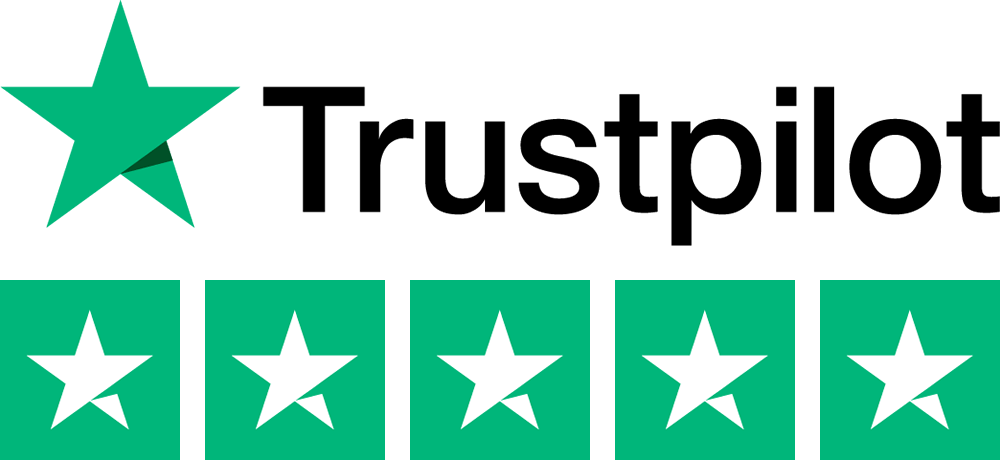.jpg)
Which lenders offer Joint Borrower Sole Proprietor mortgages?
HOW DO JOINT BORROWER SOLE PROPRIETOR MORTGAGES WORK?
At least 35 banks and building societies offer joint borrower sole proprietor (JBSP) mortgages, including Barclays, Skipton for Intermediaries and Clydesdale Bank. NatWest is the latest bank to launch a JBSP mortgage.
Joint Borrower Sole Proprietor is the modern version of a guarantor mortgage. It was designed to allow multiple people (e.g., a parent and their adult child or two partners) to apply for a mortgage together. Typically, only one person, the "sole proprietor", legally owns the property. The scheme gained popularity when the second home stamp duty levy was introduced.
While most parents use JBSP to help their children onto the property ladder, adult children with substantial incomes also use it to assist their parents in remortgaging or moving home. Many older people have struggled to qualify for mortgages or extend their mortgage terms once they expire.
Aaron Strutt, product director at Trinity Financial, says: "Not all lenders offer Joint Borrower Sole Proprietor mortgages, but there is still a fair amount of choice. The Bank of Mum and Dad has been incredibly busy in recent years, and according to reports, it would be a top ten lender based on the amount of money provided.
"If younger borrowers cannot qualify for a sufficiently large mortgage on their income, they regularly ask their parents or family members for financial support. This is either in the form of a larger deposit or using their income to go on the mortgage application to boost the amount they can borrow."
Lenders are doing more to help first-time buyers get on the property ladder. Nationwide recently launched a six-times-income mortgage; others provide income stretch mortgages. There are also low or no-deposit mortgages for those with a track record of renting or with a 1% deposit.
How Do JBSP Mortgages Work?
- Borrowers and Sole Proprietor:
- All applicants' incomes are considered when determining affordability, which can increase the maximum loan amount available.
- Only the sole proprietor (the person who will own the property) is named on the property's title deeds. Both applicants are included on the mortgage with the bank or building society.
- Purpose:
- It is primarily used to help individuals who might struggle to afford a mortgage independently, such as first-time buyers or young buyers with lower incomes.
- It enables support from family members or other parties without them having a stake in the property.
- Mortgage repayment liability:
- All parties are jointly liable for the mortgage repayments, even though only one person is the legal owner of the property. Mortgage lenders usually expect parents to use a solicitor who thoroughly explains how the scheme works and that they are still liable for the debt. If a mortgage payment is late or missed, it will register on all the mortgage holder's credit reports. This is likely to cause significant issues when borrowing or trying to take out additional credit.
- Tax implications:
- Since only the sole proprietor technically owns the property, the additional borrowers avoid potential Stamp Duty surcharges (e.g., for owning additional properties). However, applicants need to speak to their solicitor to confirm the Stamp Duty liability. The lender will also state you need to take legal advice before the mortgage is completed.
- Exit strategy:
- Lenders typically require a plan for when the supporting borrower will be removed from the mortgage, such as when the sole proprietor's income increases.
Key Lenders Offering JBSP Mortgages
While availability and acceptance criteria may vary, the following types of lenders commonly offer JBSP mortgages:
High Street Lenders:
- Barclays for Intermediaries: All Proprietors must be borrowers. All non-proprietor borrowers who live or will live in the mortgaged property must sign an occupancy form. All non-proprietors must take independent legal advice, as evidenced by a letter from the solicitor. Where the proprietor has an existing residential property that is not being sold, the maximum loan-to-value is 80%. All borrowers must sign the mortgage deed. Offers JBSP mortgages and considers up to four applicants, though only the primary borrower owns the property.
- Metro Bank for Intermediaries: Up to 95% loan-to-value (New Build properties up to 90% loan-to-value on houses and flats).
- Up to four applicants on the mortgage, with a minimum of one applicant on the property deeds.
- Income can be accepted from up to 4 applicants at full income multiples, subject to affordability.
- Maximum age 80 considered (mortgage term based on the oldest applicant).
- Interest-only and repayment options available.
- Joint borrowers are permitted to reside in the subject security (subject to signing a Declaration of Occupier form). - Skipton for Intermediaries: JBSP acceptable up to a maximum 95% loan-to-value. The lender will accept up to 4 applicants and can use all 4 incomes. There is no restriction on the relationship between the main Borrower (proprietor) and supporting Borrowers.
Specialist Lenders:
- Vida Home Loans: Vida Homeloans can accept applications on a joint application sole proprietor basis through the Helping Hand proposition. This proposition is available across the entire Residential range, where parents (including stepparents and parents of a spouse) and children (including step or adopted), siblings, grandparents, aunts, uncles, cousins and nieces/nephews assist in purchasing or remortgaging a property. They are party to the mortgage and have their income taken into account as part of the affordability assessment without the need to go onto the title deeds.
Building Societies:
- Principality Building Society: The society can consider applications for joint borrowers sole proprietors. It will base the term on the age of the oddest applicant, age 70 using employed income or up until their 76th birthday using pension income.
As well as parents and grandparents, it can now accept incomes from siblings, spouses, children, grandchildren and legal guardians. - Leeds Building Society: Has JBSP products, though the criteria vary.
Pros and Cons of JBSP Mortgages
Advantages:
- Increased Borrowing Power: Using multiple incomes can significantly boost the loan amount.
- Property Ownership: Only the sole proprietor is on the title deed, simplifying ownership.
- Avoiding Additional Tax: Supporting borrowers aren't subject to second property Stamp Duty charges. This needs to be confirmed with a solicitor.
- Flexible Support: Enables family or friends to assist without becoming co-owners.
Disadvantages:
- Joint Responsibility: All borrowers are liable for the mortgage, even if they don’t own the property.
- Exit Challenges: Removing supporting borrowers later can be complex and may require refinancing.
- Limited Lender Options: Fewer lenders offer JBSP mortgages compared to standard mortgages.
- Potential Impact on Credit: Defaults affect all borrowers' credit scores.
Eligibility Criteria
- Income Requirements: Lenders will assess the combined income of all applicants.
- Credit Checks: All borrowers must meet the lender’s credit criteria.
- Relationship Between Borrowers: Some lenders restrict JBSP mortgages to family members or close associates.
- Affordability: Lenders often require evidence of how the sole proprietor will eventually take over the mortgage entirely.
Trinity Financial consistently helps our clients navigate the complexities of Joint Borrower Sole Proprietor mortgages.
JBSP Mortgage Consultation
Whether you’re just starting or already house-hunting, our team of expert advisers can:
Compare mortgage deals from over 90 lenders. Help you plan your deposit strategy. Explain your mortgage eligibility. Guide you from the decision in principle to completion.
Let’s turn your dream of homeownership into reality. Call Trinity Financial on 020 7016 0790 to secure a mortgage, book a consultation, or complete our mortgage questionnaire.
The information contained within was correct at the time of publication but is subject to change.
Your mortgage is secured on your property. Your property may be repossessed if you do not keep up repayments on your mortgage
Banks and building societies are constantly launching new schemes to help more first-time buyers get on the property ladder.
First-time buyer schemes are widely available across large and small mortgage lenders. Some are good for borrowers with a bigger deposit or those with access to the bank of mum and dad, while there are low deposit options for borrowers needing an income stretch. There are even low-deposit mortgages for those with credit blips.
Banks and building societies are constantly launching new schemes to help more first-time buyers get on the property ladder.
1) Nationwide's Helping Hand income stretch mortgage
The most popular first-time buyer scheme is arguably Nationwide's Helping Hand income stretch mortgage, which helps borrowers secure up to six times their salary when they take a longer term fix.
2) Accord Mortgage's £5k deposit scheme
The Accord Mortgage £5k deposit scheme is a 1% deposit mortgage available to first-time buyers who provide a £5,000 deposit. The minimum loan size is £95,001, and the maximum is £495,000.
3) Skipton's 100% Track Record Mortgage
Skipton for Intermediaries is offering a 100% Track Record Mortgage, providing a no-deposit mortgage for current renters who haven't owned a property in the last 3 years and can demonstrate a track record of affordability of all monthly rent for a minimum of 12 months in the last 18-month period.
4) NatWest's new Family-Backed Mortgage
NatWest’s Family-Backed mortgage, sometimes known as a ‘joint borrower sole proprietor’ (JBSP) mortgage, can help buyers get onto the property ladder sooner or borrow more. It lets borrowers add a second person to the mortgage, but without them owning the property.
5) Barclays Family Springboard Mortgage
This scheme has been available for years and, surprisingly, is not used as much as it should be.
Applicants can use a family or friend’s savings to buy a house with their own mortgage, and the person lending the money should* get their money back, with interest.
- Lloyds Banking Group makes £2bn* lending available to first-time buyers borrowing between 4.5x salary and up to 5.5x salary
- New loan-to-income ratio designed to boost maximum mortgage loan sizes
- Up to 22% additional lending with First Time Buyer Boost scheme
Whether you take a fixed or tracker rate really depends on your current financial situation, relationship status, and attitude to risk. Most borrowers take two or five year fixes.
Many borrowers coming up to remortgage or get on the property ladder will be wondering if they should take a two-year, five-year, or a tracker, and the answer depends on their attitude to risk. Many borrowers want payment security, so they opt for five-year fixes. Those taking two-year deals often suspect rates will come down and there may be more competitively priced rates over the near to medium term.
It is not always advisable to take a fixed rate if you are planning to sell your home soon, or if you are getting divorced (and your partner and kids are not staying in the property) or your financial situation is changing because you are leaving your job or moving away. If you want to keep your home and your financial situation changes, lenders offer permission to let.
Tracker mortgages often do not have any early repayment charges, allowing borrowers to sell their property and repay the mortgage without paying high early repayment fees.
This is general information. To speak to an expert and discuss your situation, call one of Trinity Financial's brokers on 020 7016 0790 or book a consultation.













